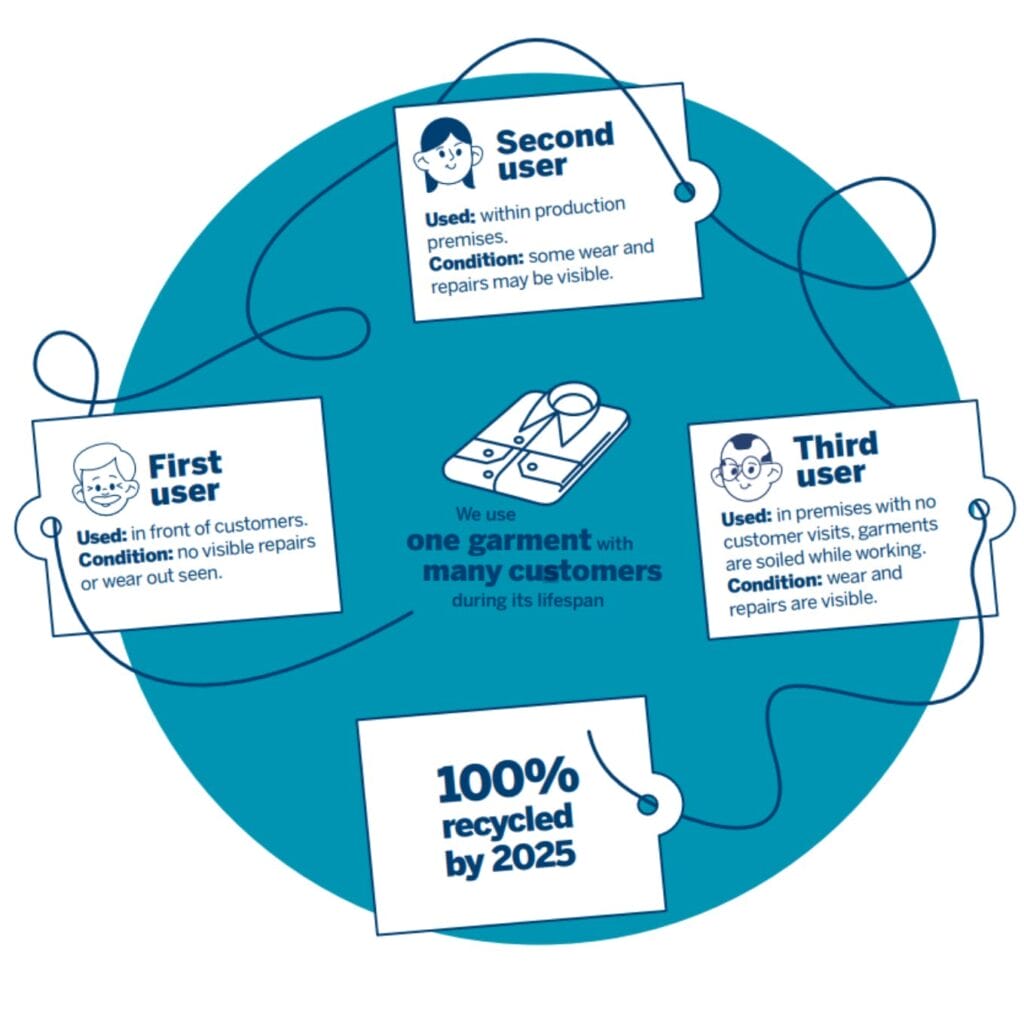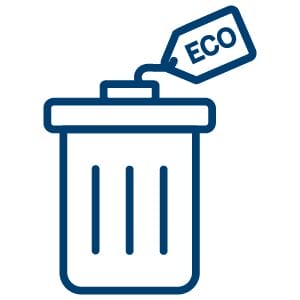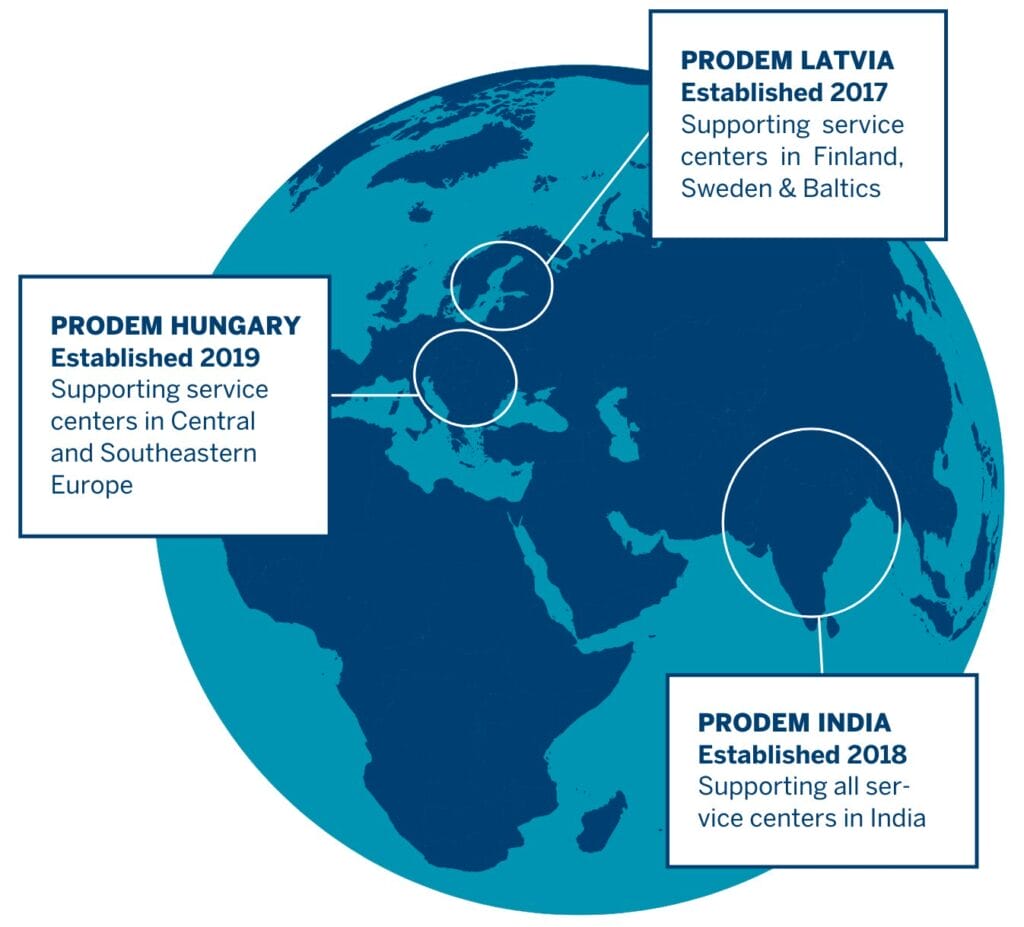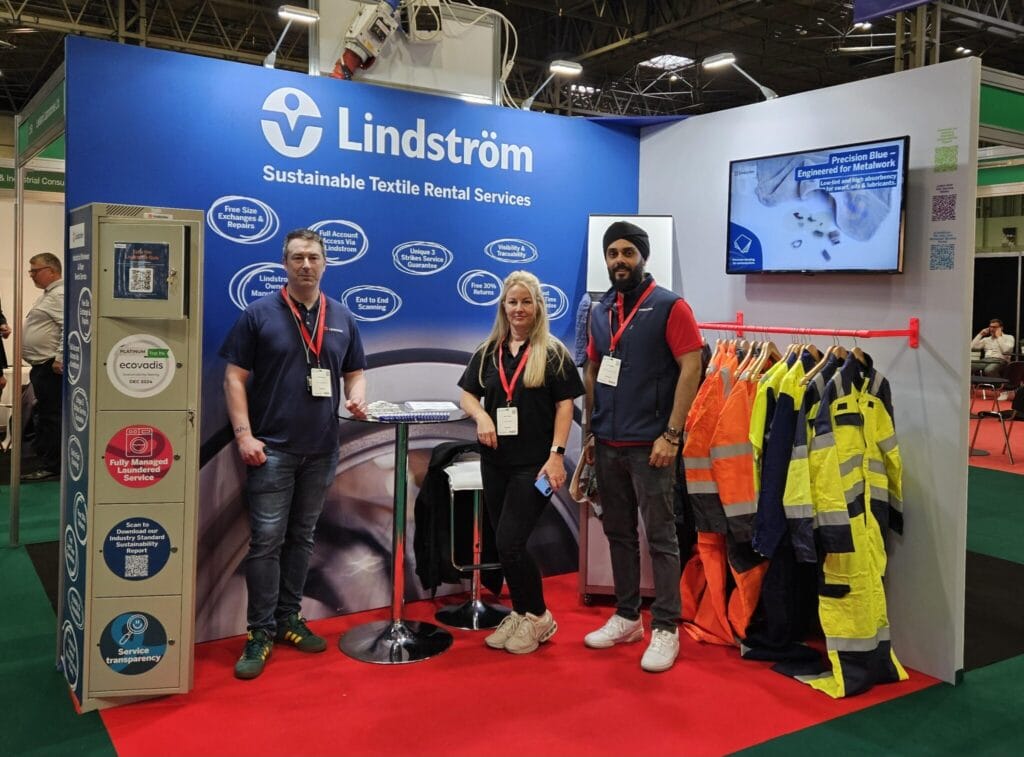
How can we improve sustainability in the textile industry?
Lindström avoids millions of kilos of unnecessary textile production by repairing and reusing our garments, thus promoting sustainability in the textile industry. We minimise overproduction by extending the lifetime of textiles and by producing new textiles only when needed. Using durable materials designed for circularity, we promote sustainable practices at the very beginning.
We manufacture additional orders on demand in our own workwear manufacturing facilities, Prodems. This way, we effectively eliminate the textile obsolete risk in the stocks. To conserve natural resources, we optimise the use of water and energy in our laundries as well as our customer delivery loads and routes. In the washing process, we recycle water and utilise heat from wastewater to warm fresh water. When textiles reach the end of their lives, we recycle them as new products or raw materials.
3 ways to reduce the environmental impact and improve sustainability in the textile industry

Choose durable and
repairable textiles

Choose
reusable
textiles

Minimise stocks and inventories
Did you know?
We reach 44% reduction in emissions when doubling the times a garment is worn *
2.2 kg CO2 can be avoided per person in a year when using reusable garments **
9 months longer lifespan equals 20-30% smaller environmental impact *
*Environmental Coalition on Standards (ECOS)
**Study done by Gaia Consulting 2021
1. Choose durable and repairable products
Extending product life yields a greater environmental impact than any other measure. Extending the lifetime of clothes by nine months would reduce environmental impact by 20%–30%. Doubling the number of times a garment is worn on average can reduce GHG emissions by 44% compared with producing a new garment.
Textile rental companies are guided by their business interest to make durable textiles that are designed and built to last, repaired and reused to lengthen their lifespan. We ensure the durability of our materials via test washes, user trials, and the use of reinforcement patches in high-stress areas of our garments.
We consider reusability and repairability as early as the design phase, for example, with adjustable features and modular designs. Continuous work with suppliers and recycling partners helps us improve the recyclability of our products and increase the share of recycled materials in our textiles. Our target is that by 2025, 30% of our new products will include recycled or bio-based fibres.

2. Choose reusable products

Reusing has a significant impact on the environment, as it reduces the number of garments needed. Customisation of workwear always limits their reusability. Efficient workwear management with different user groups is an impactful way to promote this.
Reusability of garments means that
67% less garments are needed compared to non-reusable, customised garments
2.2 kg CO2 can be avoided per person in a year
Three key benefits of reusing materials to improve sustainability in the textile industry

Less raw materials, such as cotton and fossil fuels

Less fabric, manufacturing & transportation throughout the supply chain

Less waste generated
3. Minimise the stocks and inventories
Efficient stock management helps to reduce textile overproduction and minimise waste by reducing textile obsolescence risk at stocks.
How we minimise the number of textiles in stock to support sustainability in the textile industry

Accurate forecasts of the number of textiles needed

Cross-use of regional stocks before ordering new textiles

On-demand garment production in our Prodems
Prodem – a unique on-demand manufacturing practice
Our Prodem facilities use a dynamic customer-driven textile manufacturing practice developed by Lindström. It enables us to react quickly to our customers’ needs. The customer order acts as a signal to start production in the nearest Prodem facility. Such manufacturing practices can meet even a small-scale need with the shortest lead time.
Simultaneously, we reduce textile overproduction, minimise waste and improve cost efficiency. As workwear is produced on demand, no unused garments are in stock or capital tied up in the inventory. Stationed close to our customers, we can avoid costs and carbon emissions from deliveries and excess stocks.
Prodem in figures
Number of employees:
Production:
Number of orders:
Avg. order quantity:
Avg. delivery time for
replacements
Avg. delivery time for additional
orders:
Avg. delivery first orders (< 100 pcs):
2023
377
663,072 pcs
163,253
4.1 pcs
4.9 days
8.5 days
15 days





